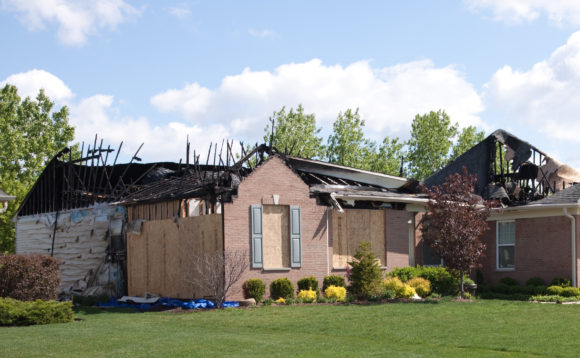Setting fire to a house is much more than an act of vandalism and if insurers want to exclude such damage from coverage they had best use the term “arson” in policy exclusions, the U.S. 6th Circuit Court of Appeals ruled.
The Cincinnati-based appellate court affirmed a district court decision to reject Allstate Insurance Co.’s assertion that fire damage to a house was not covered because its policy excluded acts of vandalism.
The court, in an opinion written by Judge David W. McKeague, said youths who throw rocks through windows, gang members who spray-paint train cars and teenagers who toilet-paper teachers’ houses commit vandalism.
“Yet that word would be far from the first to describe the act of burning down a person’s dwelling,” the opinion says. “Indeed, we think one would describe arson as vandalism about as regularly as one would call murder a battery—which is to say almost never.”
The case arose after Wells Fargo foreclosed on a house formerly owned by Antoniano Delsignore in Poland, Ohio. Delsignore got behind in his payments about three years after taking out a mortgage and Wells Fargo took over ownership in 2013. The bank was listed as the insured mortgagee on Delsignore’s Allstate homeowner’s policy.
In February 2014, an unknown arsonist set fire to the house.Allstate denied coverage because the policy excluded coverage for damage caused by vandalism or malicious mischief if the property is vacant or unoccupied for more than 30 consecutive days.
The U.S. district court didn’t agree. The judge noted that the policy specifically addressed damage by “fire” and had a separate provision addressing “vandalism and malicious mischief.” He granted summary judgment to Wells Fargo. Allstate appealed.
The court found no reason to disturb the district court’s ruling. The opinion said it found “decisive” the fact that the policy language referred to arson only once, in a section that states it will pay a reward in connection with a fire loss.
“If Allstate were correct that arson should be read as a subset of ‘vandalism or malicious mischief’—and not ‘fire’ loss—it is odd that the only mention of arson in the policy is in connection with a fire loss, and not a vandalism loss,” McKeague wrote.
Allstate argued that the provision mentioning fire loss “is not definitional.” The court agreed, but said it is a clue as to what definition was intended. Any ambiguity must be interpreted in favor of Wells Fargo, the opinion says.
Allstate wrote a brief explaining that the vacancy provision was put in the policy because vacant dwellings pose a far great risk than occupied dwellings. The court said Allstate misses the point.
“Its argument explains the rationale behind the vacancy condition, but it does not help us determine whether arson is considered a fire loss or a vandalism loss under the policy,” the opinion says. “And at any rate, the fact that arson carries the most destructive potential of any purported act of vandalism only makes it more confounding that the policy does not more explicitly account for it.”
Was this article valuable?
Here are more articles you may enjoy.


 Pacific Northwest Braces for Even More Flooding Rain This Week
Pacific Northwest Braces for Even More Flooding Rain This Week  LA Fires Push Insurers’ 2025 Disaster Losses to $107 Billion
LA Fires Push Insurers’ 2025 Disaster Losses to $107 Billion  California Again Delays Wildfire Protection Rules for Homes
California Again Delays Wildfire Protection Rules for Homes  Marijuana’s Move to Schedule III: What it Really Means for Cannabis Insurance
Marijuana’s Move to Schedule III: What it Really Means for Cannabis Insurance 